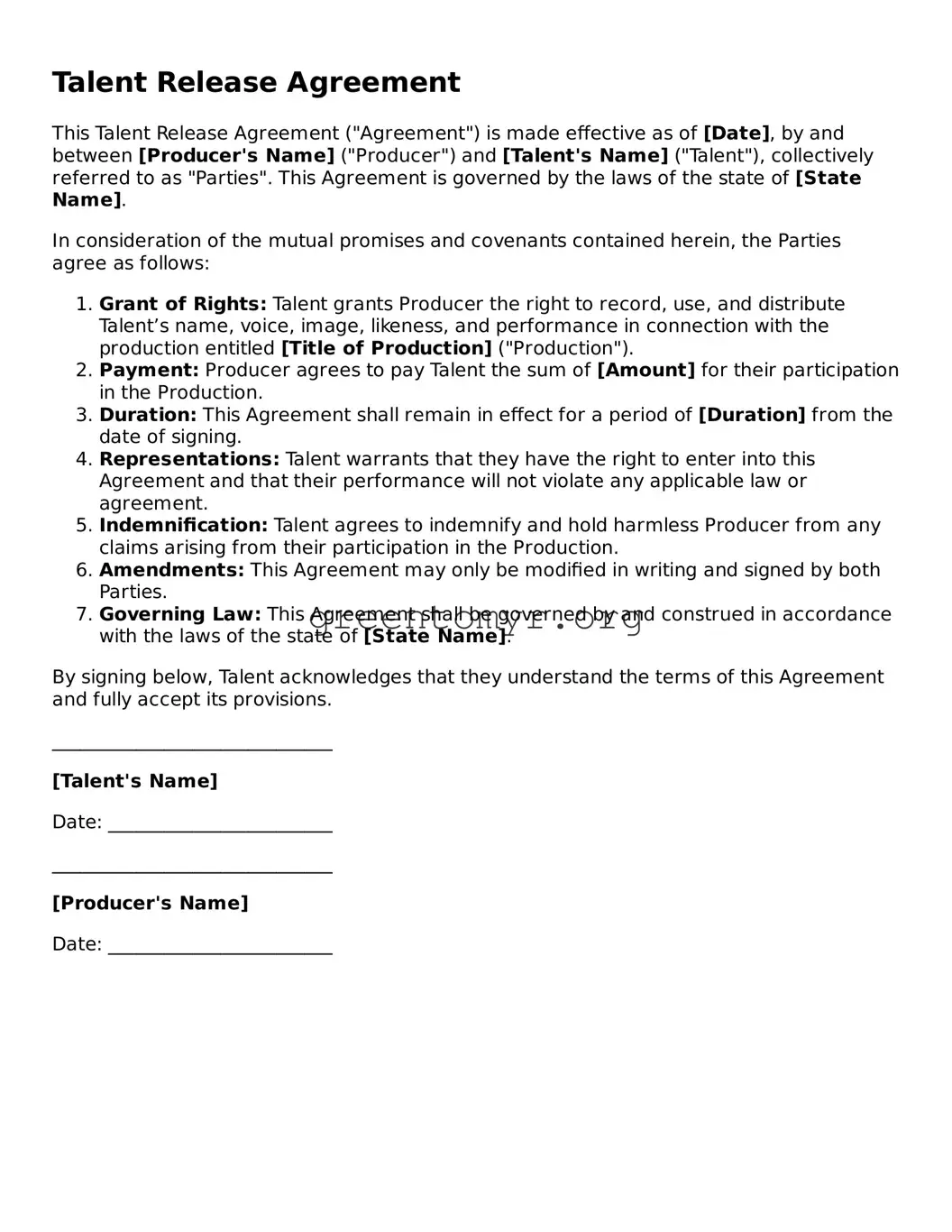When filling out a Talent Release form, many individuals overlook crucial details that can lead to significant issues down the line. One common mistake is inconsistency in personal information. If a performer provides differing names, whether it’s their stage name versus their legal name, it can cause confusion regarding rights and permissions later.
Another frequent oversight involves failing to read the entire document. It is tempting to skim through, especially when under pressure, but missing clauses can result in misunderstandings about the scope of rights being granted. Always make sure to review every section thoroughly.
Additionally, not providing a clear date of the event or production can create problems. Without a specified date, the agreement may lack clarity about the timeframe of the rights being granted. It's essential to include specific dates to avoid ambiguity.
Witness signatures often go ignored. Some forms may require a witness to sign, and neglecting this step can render the release invalid. Be aware that a witness adds credibility to the document and ensures that both parties understand the agreement.
Forgetting to include contact information is another mistake. If questions arise about the release, having a point of contact is vital. Include a phone number and email address to facilitate communication when needed.
Many individuals also fail to check the box for whether the talent wants to be compensated. This detail can affect future negotiations and awareness of the arrangement. Always clarify expectations regarding payment.
Inadequate understanding of rights granted can lead to problems too. Some performers do not realize what they are signing away, and it’s crucial to understand exactly what rights you are granting for your image and performance. Don't hesitate to seek clarification.
Some performers neglect to ask about the duration of the agreement. It’s essential to know how long the production can use your likeness or performance. This timeline affects whether you can grant similar rights later to another entity.
Finally, submitting incomplete forms is surprisingly common. Leaving any fields blank can delay projects or lead to rejection of the form entirely. Ensure all required sections are filled out completely before submission to avoid unnecessary setbacks.
